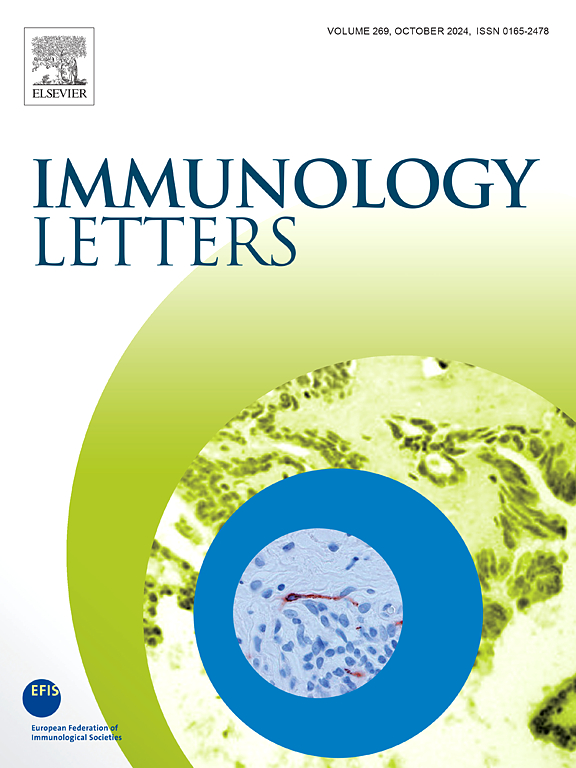Th1/Th2范式:辅助性 T 细胞可塑性的错误表述
IF 3.3
4区 医学
Q3 IMMUNOLOGY
引用次数: 0
摘要
几十年来,Th1/2 范式一直被用于将免疫反应分为 Th1 或 Th2 偏向。然而,近年来出现了大量的证据来支持对经典 Th1/Th2 范式的否定,例如发现了新的辅助性 T 细胞亚群、辅助性 T 细胞可塑性和保护性混合 Th1/Th2 反应。这篇观点文章结合最近的研究成果,探讨了经典 Th1/Th2 范式的缺点,目的是促进更新模型的开发,以代表 Th 细胞的多样性。本文章由计算机程序翻译,如有差异,请以英文原文为准。
The Th1/Th2 paradigm: A misrepresentation of helper T cell plasticity
For decades, the Th1/2 paradigm has been used to classify immune responses as either Th1 or Th2-biased. However, in recent years, a staggering amount of evidence has emerged to support rejection of the classical Th1/Th2 paradigm, such as the discoveries of new helper T cell subsets, helper T cell plasticity and protective mixed-Th1/Th2 responses. This opinion piece investigates the shortcomings of classical Th1/Th2 paradigm in the context of recent works, with the goal of facilitating the development of newer models to represent the diversity of Th cells.
求助全文
通过发布文献求助,成功后即可免费获取论文全文。
去求助
来源期刊

Immunology letters
医学-免疫学
CiteScore
7.60
自引率
0.00%
发文量
86
审稿时长
44 days
期刊介绍:
Immunology Letters provides a vehicle for the speedy publication of experimental papers, (mini)Reviews and Letters to the Editor addressing all aspects of molecular and cellular immunology. The essential criteria for publication will be clarity, experimental soundness and novelty. Results contradictory to current accepted thinking or ideas divergent from actual dogmas will be considered for publication provided that they are based on solid experimental findings.
Preference will be given to papers of immediate importance to other investigators, either by their experimental data, new ideas or new methodology. Scientific correspondence to the Editor-in-Chief related to the published papers may also be accepted provided that they are short and scientifically relevant to the papers mentioned, in order to provide a continuing forum for discussion.
 求助内容:
求助内容: 应助结果提醒方式:
应助结果提醒方式:


